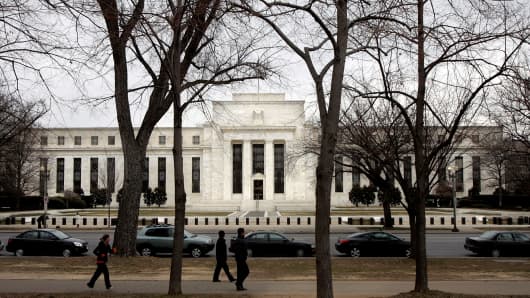Facing strong foreign competition, domestic producers are forced to seek productivity gains in order to keep the costs down and protect their market shares at home and abroad. U.S. nonagricultural producers, for example, were able to cut their export prices last year a record 2.9 percent.
A broader impact of foreign-trade-induced price effects can also be seen in the U.S. consumer price index. Thanks partly to sectors exposed to rigors of world clearing prices, our consumer price inflation in December was down to 0.8 percent. However, price inflation in sheltered sectors like medical care services, restaurants, utilities and energy services ranged from 2.4 percent to 5.8 percent.
Read MoreFed will need to do more stimulus this year: Pro
U.S. wages have also been affected. As shown by falling export prices, there is no doubt that competitive pressures of a strengthening dollar held down hourly compensations in the nonfarm business sector to 2.5 percent in the first nine months of last year, despite a vigorous labor demand that created 1.7 million new jobs in 2014.
So far, these exchange rate effects have not had a noticeably negative impact on net exports. It is estimated, for example, that the U.S. trade balance on goods and services has not been a drag on economic growth in 2014. But that is likely to change this year.
A continuation of European economic stagnation and weaker growth in East Asia are bound to cause a significant shrinkage of U.S. export markets in these areas. A strong dollar will only compound that negative demand effect to drive up the trade deficit and increase downward pressures on American economic growth.
A dollar shortage
These examples show that in a highly open economy exchange rate effects are important signals for monetary policy. That is particularly the case for the U.S., whose currency serves as the word's key reserve asset and a dominant transactions medium in global trade and finance.
At times, exchange rate movements can also create policy dilemmas. We are facing one of them right now, because the dollar's rising relative price indicates its shortage in world financial markets. If the Fed wanted to follow that signal and stop the dollar's climb, it should stand ready to supply additional dollar liquidity to create a better demand-supply balance of dollar assets.
Such a perfectly clear market signal can strike people as an entirely counter-intuitive proposition at a time of a quasi universal consensus that the Fed should continue to shrink its huge balance sheet.
Ultimately, as always, the Fed will solve this particular dilemma in terms of its policy mandate for growth and price stability. And the silver lining for the Fed is that a strong dollar gives it an extra degree of freedom in pursuing interest rate normalization, because it takes away the urgency for policy change.
Fed's technical move?
That's what the Fed may be thinking about at the moment. Here are some indications in support of that hypothesis.






